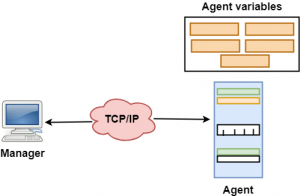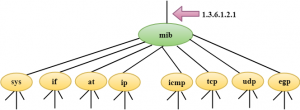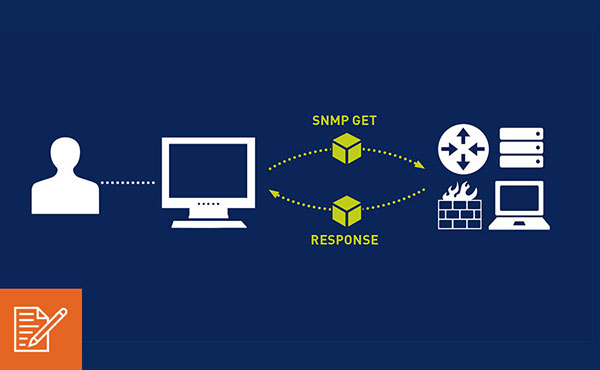What is the SNMP Protocol? And What is its Use in the Network?
SNMP protocol is derived from Simple Network Management Protocol, which means “simple network management protocol.” The SNMP protocol is a framework used to manage devices connected to the Internet. It can provide us with operations and operators to monitor and manage the Internet network. In this part of the network training, we will examine this application protocol in network management.
Concept of SNMP protocol
The SNMP protocol has two parts: Manager and Agent.

The protocol manager part is a host that controls and monitors a set of agents such as routers. A manager is an application layer protocol where several management stations can control a set of agents.
This protocol is designed at the application level. It can manage all types of devices manufactured by different companies and installed in different parts of the network’s physical layer.
This layer is used for heterogeneous networks (Heterogenous Networks), which are made of local area networks (LAN) and wide-area networks (WAN). Many routers or gateways are used to connect these networks.
Managers and agents in SNMP protocol
In the SNMP protocol, a manager is a host that runs SNMP client programs, while an agent is a router that can deploy and run an SNMP server.
Internet network management is created through communication and simple interactions between managers and agents.
In the SNMP protocol, the agent keeps the information in the databases while the manager accesses the values in the databases. For example, a router can keep variables relevant to its work, such as the number of packets received or forwarded packets. At the same time, the administrator can compare these variables and determine that the router is congested. is it or not
Agents can also participate in processes performed by the manager. A server application can run on an agent to monitor the environment and check if an error occurs. Agents here send alert messages to managers.
Three ideas used in management with SNMP protocol
- The manager can check the agent by requesting information that reflects the agent’s behavior;
- The administrator can force an agent to perform some operations. For this, he can use reset values in the agent database;
- An agent can also cooperate with management. For this, the agent uses the alerts sent by the manager regarding its unusual actions.
Management components
Network management cannot be achieved through the SNMP protocol, but this protocol can be used to communicate with other devices with the same protocol. Management here can be accomplished through other protocols. These two protocols are:
- SMI protocol (Structure of Management Information);
- MIB protocol (Management information base);
Management is a combination of SNMP, SMI, and MIB protocols. These protocols work like Abstract Syntax notation (1) and Basic Encoding Rules (BER).
SMI protocol
The SMI protocol is derived from the term Structure of information management. The SIM protocol is a component used in network management. Its main functions are to define the types of data that must be stored in objects and to indicate data encoding for transmission over the network.
MIB protocol
The MIB protocol is derived from the term Management Information Base, a secondary network management component. Each agent has its own MIB section that collects all the objects the agent needs to manage. The MIB protocol divides objects into eight groups:
- System (System);
- User interface (Interface);
- Address translation (Address Translation);
- IPs;
- ICMP;
- TCP;
- UDP;
- EXP
These categories fall under a MIB object.

SNMP protocol components
Above, we learned about the SNMP protocol, and now it’s time to learn about the five parts of this protocol. The main parts of this protocol are as follows:
- GetRequest;
- GetNextRequest;
- SetRequest;
- GetResponse;
- trap;
- GetRequest section: This part of the protocol sends messages from the client-side to an agent (Server) to retrieve a specified variable value;
- GetNextRequest section: Here, the manager sends a message to the agent to retrieve the value of a specified variable. This message is used to retrieve the value of variables in a table. If the manager does not know the index number of the desired table entry, it cannot retrieve the desired value. In this situation, the GetNextRequest message is used to define an object.
- GetResponse: The GetResponse message is sent from the agent to the administrator in response to two GetRequest and GetNextRequest messages. This message contains the variable value requested by the administrator.
- SetRequset: This message is given by the manager to the agent to set (replace) a value in a certain variable.
- Trap: The agent sends this message to the manager when he wants to report an event to them. For example, if the agent has rebooted, the agent will notify the administrator by sending a message about this event and the reboot time.

